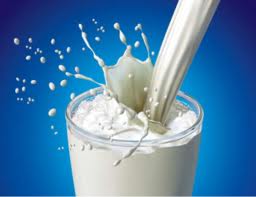Got Milk? Your guide to dairy
Are you getting your necessary daily fix of dairy? Most
people neglect this part of their diet when really they should prioritize it. Milk
is a great way to fill the gaps in your diet when you are strapped on time and
need a quick meal. Dairy products like milk are filled with nutrients,
vitamins, and minerals that can have many health benefits and are essential to
human growth and development. This guide is to inform you of those benefits, to
teach you what products are considered dairy, to let you know how much dairy
you need personally, and to give you some helpful tips for healthier dairy
choices.
The benefits of dairy-
Dairy contains many nutrients including: Protein, Vitamins A & D, Potassium,
Phosphorus, Magnesium, and Calcium. Most of our calcium in the human diet comes
from dairy products. In fact, if you aren’t getting the appropriate amount of
dairy in your diet it is likely that you are calcium deficient. Calcium from
dairy products leads to stronger bones and teeth and decreases your risk for
osteoporosis. Along with stronger teeth, you are also less likely to develop
cavities. Dairy products also reduce your blood pressure, risk of hypertension,
type 2 diabetes and even certain cancers. Are you convinced that you need your
dairy yet? Research also indicates that dairy aids in weight loss and weight
management. Your parents were doing you a favor by making you drink a glass of
milk with dinner every night, as dairy aids in growth and development in
adolescence. As an adult, the protein found in dairy (casein) aids in muscle
repair and development as well as building stronger, denser bones.
How much dairy do you need?
Below
is list taken directly from the USDA. Find where you fit
in and see just how much dairy you need in your diet.
| Children | 2-3 years old | 2 cups | ||
| 4-8 years old | 2 ½ cups | |||
| Girls | 9-13 years old | 3 cups | ||
| 14-18 years old | 3 cups | |||
| Boys | 9-13 years old | 3 cups | ||
| 14-18 years old | 3 cups | |||
| Women | 19-30 years old | 3 cups | ||
| 31-50 years old | 3 cups | |||
| 51+ years old | 3 cups | |||
| Men | 19-30 years old | 3 cups | ||
| 31-50 years old | 3 cups | |||
| 51+ years old | 3 cups | |||
What counts as a cup?
Ingeneral one cup of dairy is equivalent to one cup of milk, soymilk, or yogurt,
1.5 ounces of natural cheese, or 2 ounces of processed cheese.
What are my dairy sources?
Milk, Skim milk, 1%, 2%, whole milk, chocolate milk,
strawberry milk, lactose-reduced milk, lactose free milk, and soymilk
Cheese American, Cheddar, Ricotta, Cottage, Swiss,
Parmesan, and Mozzarella
YogurT – fat-free, low-fat, reduced fat,
whole milk, and frozen
Milk-based desserts
-puddings, frozen yogurt, ice cream
**You want your dairy products to be either fat free or low
fat. The nutrient content is the same in reduced fat milk compared to whole
dairy, the only difference in the fat content leading to extra, empty calories.
I have two exceptions to this rule of thumb. The first is for yogurt. With
yogurt I recommend low fat vs. fat free as fat is part of what yogurt actually
is. The second exception is for children and growing adolescents. For them I
recommend 2% or whole milk and dairy. As they are growing and developing they
can benefit from the additional fat and calories. However, if your child is overweight or at
risk of becoming overweight, then I would recommend the 1% or fat free
products. **
If you are lactose intolerant your best bet to replace your
dairy is to use soy milk or soy products.
For more information on dairy you can visit the USDA website
at http://www.choosemyplate.gov



Leave a comment